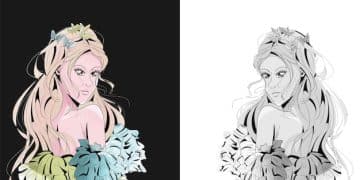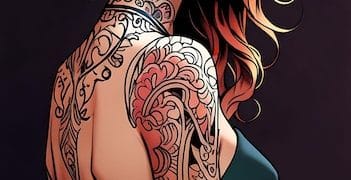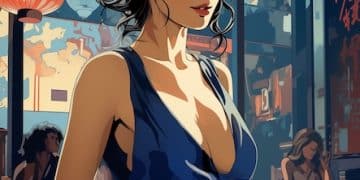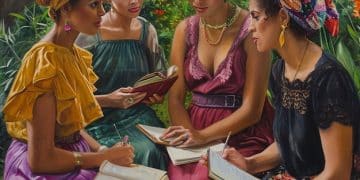The Power of Silence: Visual Storytelling in Seinen Manga
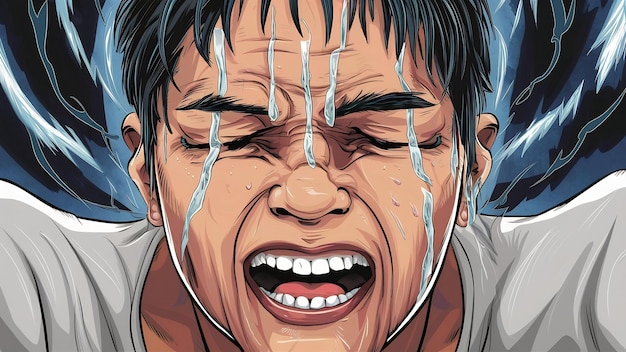
The Power of Silence: Examining the Use of Visual Storytelling in Seinen Manga explores how the absence of dialogue and reliance on visual cues enhance the narrative depth and emotional impact of seinen manga, appealing to a mature audience.
Have you ever been moved by a story told without words? In the world of seinen manga, the power of silence: Examining the use of visual storytelling in seinen manga isn’t just an aesthetic choice; it’s a deliberate narrative tool that elevates the medium to new heights. Let’s delve into how this is achieved.
Understanding Seinen Manga
Seinen manga is a category of Japanese comics marketed towards young adult men. Unlike shonen manga, which often focuses on action and adventure, seinen manga typically tackles more mature themes, complex characters, and nuanced storytelling. The visual language used in seinen manga is finely crafted to resonate with its older, more discerning audience.
One of the defining characteristics of many seinen titles is their willingness to embrace silence. This doesn’t mean a complete absence of dialogue, but rather, a strategic use of visual cues to convey information, emotions, and atmosphere. This approach demands more engagement from the reader, encouraging them to actively interpret the story rather than passively consuming it.
Mature Themes and Visual Storytelling
Seinen manga often delves into mature themes like existentialism, moral ambiguity, and the complexities of human relationships. Visual storytelling becomes crucial in portraying these ideas effectively. A single panel can communicate the weight of a character’s past, their internal struggles, or the subtle power dynamics at play in a scene.
The Absence of Exposition
Unlike some genres that rely heavily on exposition, seinen manga often trusts its audience to piece together the narrative through visual clues. Settings details, character expressions, and even the arrangement of panels on a page can provide vital information, creating a richer and more rewarding reading experience.
- Emotional Depth: Silence allows for a deeper exploration of characters’ inner lives, showcasing their feelings through expressions and body language.
- Atmospheric Tension: The strategic use of quiet moments can build suspense and create a palpable sense of unease.
- Reader Engagement: Visual storytelling demands active participation from the reader, making them a part of the storytelling process.
- Subtlety and Nuance: Silence can convey meanings that words often fail to capture, allowing for a more subtle and nuanced narrative.
In essence, understanding how seinen manga utilizes silence is fundamental to appreciating its artistic depth and narrative sophistication. It’s a conscious choice to prioritize visual communication, leading to a richer more immersive story.
The Art of Panel Composition
Panel composition is fundamental to visual storytelling in all comics, but its importance is amplified in seinen manga, where silence often reigns supreme. The arrangement, size, and content of panels work together to guide the reader’s eye, create pacing, and convey specific emotions. Expertly crafted paneling can evoke feelings that dialogue alone could never achieve.
Seinen manga artists meticulously design each page, considering how individual panels interact with one another. A large, detailed panel might be used to emphasize a crucial moment or a character’s reaction while a series of smaller panels can create a sense of urgency or build suspense. The absence of dialogue then focuses the readers’ attention to the artistry and emotion conveyed in these compositions.
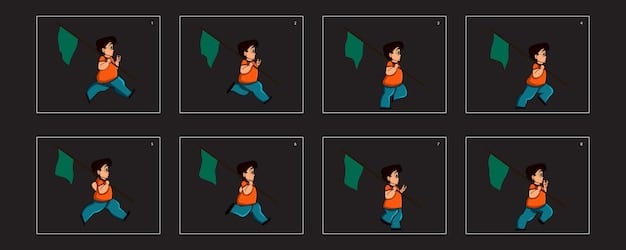
Varying Panel Sizes
The size of a panel can dramatically impact its perceived importance. Larger panels often highlight key moments or showcase breathtaking scenery, while smaller panels can be used to convey quick actions or subtle reactions. The contrast between panel sizes can create a dynamic reading experience and dictate the pacing of the story.
Panel Layout and Flow
The layout of panels on a page influences how the reader’s eye moves through the story. A traditional grid layout offers a sense of order and predictability, while more experimental layouts can create a sense of chaos or disorientation. The direction and sequence of panels can also subtly guide the reader’s interpretation of events.
- Eye Tracking: Artists carefully consider how the reader’s eye flows across the page, using panel placement to create a deliberate reading path.
- Emotional Impact: The size and shape of panels can evoke specific emotions, from the claustrophobia of small, cramped panels to the freedom of large, open ones.
- Pacing and Rhythm: Panel layout helps to control the pacing of the story, allowing for both moments of rapid action and quiet, reflective pauses.
In essence, the art of panel composition in seinen manga is a sophisticated technique that allows artists to communicate complex ideas and emotions without relying on words. It’s a masterful use of visual language that elevates the medium to new heights.
Character Expressions and Body Language
In the absence of dialogue, character expressions and body language become paramount. Seinen manga artists often excel at capturing subtle nuances in their characters’ faces and postures, conveying a wealth of information about their inner states, motivations, and relationships.
A slight furrow of the brow, a subtle shift in posture, or a barely perceptible twitch of the lips can speak volumes, revealing a character’s hidden thoughts and feelings. This emphasis on non-verbal communication allows for a deeper and more intimate connection between the reader and the characters, fostering empathy and understanding.
The Power of Subtlety
Seinen manga often avoids overt displays of emotion, opting instead for subtle expressions that hint at deeper feelings. This approach requires the reader to pay close attention to the details, actively interpreting the characters’ behavior and motivations.
Body Language as Storytelling
Body language can be used to convey power dynamics, unspoken desires, and hidden conflicts. The way characters stand, move, and interact with one another can reveal a great deal about their relationships and their places in the world.
- Detailed Anatomy: Seinen manga often features more realistic and detailed depictions of the human form allowing for a wider range of expressive possibilities.
- Microexpressions: The ability to capture fleeting microexpressions is a hallmark of skilled seinen artists adding layers of complexity to their characters.
- Cultural Context: Body language is often culturally specific and seinen manga artists may draw upon Japanese traditions to enhance their storytelling.
In conclusion, the ability to effectively portray character expressions and body language is a vital skill for seinen manga artists. It enables them to create compelling characters who resonate with readers on a deeply emotional level, even without the use of words.
Symbolism and Visual Metaphors
Symbolism and visual metaphors are invaluable tools in the seinen manga artist’s arsenal, allowing them to convey complex ideas and emotions through visual imagery. These elements add layers of meaning to the story, inviting readers to interpret the narrative on a deeper level.
A recurring motif, a carefully chosen color palette, or a symbolic object can all contribute to the overall message of the manga. These visual cues can be used to foreshadow events, represent abstract concepts, or explore the underlying themes of the story.
Recurring Motifs
Recurring visual motifs can serve as powerful symbols, representing key ideas or emotions that run throughout the manga. A specific flower, animal, or weather phenomenon might be used to represent love, loss, or the passage of time.
Color Symbolism
Color can evoke a wide range of emotions and associations. Seinen manga artists may use color strategically to create mood, highlight important elements, or represent different aspects of a character’s personality.
- Water Imagery: Water can symbolize cleansing, rebirth, or the overwhelming nature of emotions, appearing in various forms throughout the story.
- Use of Shadows: Shadows often represent the unknown, hidden aspects of characters, or the darker side of human nature, adding depth to the narrative.
- Architectural Symbolism: Buildings and landscapes can reflect the inner states of characters, or the social and political forces at play in the story.
In essence, through the masterful deployment of symbolism and visual metaphors, seinen manga artists can create stories that resonate far beyond the literal level. It’s a powerful technique that enriches the reading experience and invites readers to engage with the manga on a more intellectual and emotional level.
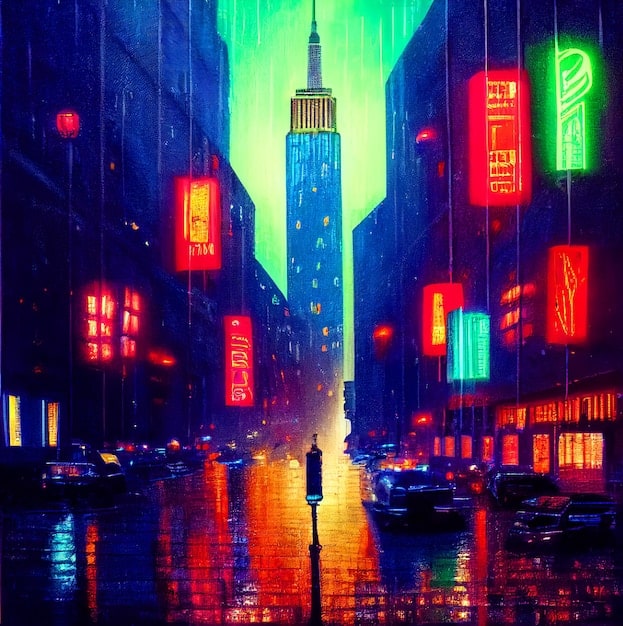
The Use of Silence to Build Suspense
Silence, when used strategically, can be a potent tool for building suspense. Seinen manga artists often employ silent panels, drawn-out pauses, and ambiguous imagery to create a sense of unease, anticipation, and dread. The absence of dialogue amplifies tension, leaving readers on the edge of their seats.
These moments of silence allow the reader’s imagination to run wild, filling in the blanks and anticipating potential threats. The longer the silence stretches, the more intense the suspense becomes, creating a truly immersive and unforgettable reading experience.
Anticipation through Omission
Withholding information is a classic technique for building suspense. Seinen manga artists can use silent panels to obscure crucial details, leaving readers to wonder what is happening just off-screen.
Creating Atmosphere
Silence can be used to create a specific atmosphere, whether it’s the oppressive quiet of a haunted house or the eerie calm before a storm. These moments of stillness can heighten the emotional impact of the story and amplify the sense of dread.
- Prolonged Pauses: Lengthening the time between events in a story to extend the anticipation of the reader and build tension.
- Obscured Imagery: Obscuring elements through use of shadows or distance can create mystery, causing readers to question or fear the unknown.
- Psychological Impact: Using prolonged silence to create discomfort encourages readers to confront their own expectations and anxieties.
Silence can be a powerful tool for building suspense in seinen manga. By carefully controlling the flow of information and creating atmospheric tension, these artists craft stories that grip readers from beginning to end.
Examples of Effective Silence in Seinen Manga
Several seminal works of seinen manga exhibit the masterful implementation outlined above. These instances show how impactful visual narrative can be, enhancing meaning and delivering potent experiences to readers.
From introspective character studies to suspenseful thrillers, silence has been employed to enrich plotlines, showcase characters’ development, and allow visual elements to take precedent. These selected works not only exemplify the discussed strategies, but validate the innovation and influence of effective visual storytelling in mature manga formats.
Berserk by Kentaro Miura
While ‘Berserk’ does include rich dialogue, it also has panels that display Guts’s raw emotion and determination through detailed art. The silence during his battles or internal reflections deepens the impact of character and the story’s somber theme.
Vagabond by Takehiko Inoue
The silence in ‘Vagabond’ emphasizes the isolation and intensity of Musashi Miyamoto’s journey. Visually driven, silent moments capture his evolving philosophy and combat encounters powerfully, conveying themes of self-discovery and mastery.
- Goodnight Punpun by Inio Asano: It has visual representations of characters’ mental states rather than dialogue, enhancing feelings of isolation and existential dread.
- Vinland Saga by Makoto Yukimura: Depicting the brutal Viking backdrop, many critical turns occur without the characters speaking, amplifying the realism and grim atmosphere.
Therefore, examining works like ‘Berserk’ and ‘Vagabond’ exemplifies how silence builds a story and allows emotion to sit at the forefront. These works serve to validate the effectiveness of visual narrative in seinen manga, solidifying its position as a vital storytelling approach.
The Enduring Appeal of Visual Storytelling
The enduring appeal of visual storytelling in seinen manga lies in its ability to engage readers on a deeply emotional and intellectual level. By prioritizing visual communication over dialogue, these stories create a more immersive and rewarding reading experience.
This approach requires active participation from the reader, encouraging them to interpret the narrative, decipher the characters’ emotions, and connect with the underlying themes of the manga. This active engagement fosters a stronger connection between the reader and the story, making for a truly unforgettable experience.
| Key Element | Brief Description |
|---|---|
| 🎨 Panel Composition | Arranging panels to control pacing and convey emotion. |
| 🎭 Character Expression | Facial cues and body language replacing dialogue. |
| 🌟 Symbolism | Using visual motifs to convey deeper meanings subtly. |
| 🤫 Strategic Silence | Generating suspense and anticipation through absence of dialogue. |
Frequently Asked Questions
What is Seinen Manga?
How does silence enhance emotional storytelling in manga?
What role does panel composition play in conveying a story without dialogue?
Can you give an example of a Seinen manga that utilizes visual storytelling effectively?
Are there any cultural elements specific to Japanese manga that enhance visual narrative?
▼
Seinen manga is a category of Japanese comics aimed at young adult men. It usually features more mature themes, complex narratives, and nuanced character development, distinguishing it from shonen manga.
▼
Silence intensifies emotional impact by focusing on characters’ expressions and body language, prompting readers to infer unspoken feelings and add personal interpretations, creating deep engagement.
▼
Panel composition guides visual flow, emphasizes key moments, and establishes pacing. Using various panel sizes and arrangements allows manga artists to narrate and create a dynamic reading trajectory.
▼
‘Vagabond’ by Takehiko Inoue is an example. It emphasizes visual storytelling to highlight the main character’s physical determination and introspective growth, showcasing his battles and isolated journey with minimal dialogue.
▼
Cultural elements are utilized such as symbolism derived from Zen Buddhism, and unique expressions of emotion. Attention in manga underscores subtle context and increases narrative intensity through iconic Japanese imagery.
Conclusion
In conclusion, the power of silence: Examining the use of visual storytelling in seinen manga reveals how manga artists achieve unparalleled levels of narrative and emotional depth. By embracing silence, they create a unique space where readers actively participate, interpreting visual cues and exploring the story’s complex layers. This interaction significantly enhances the manga experience.

